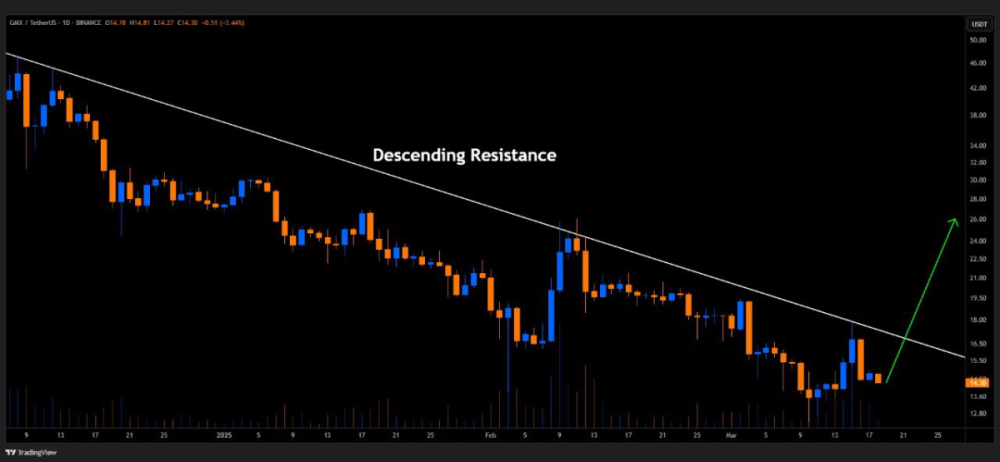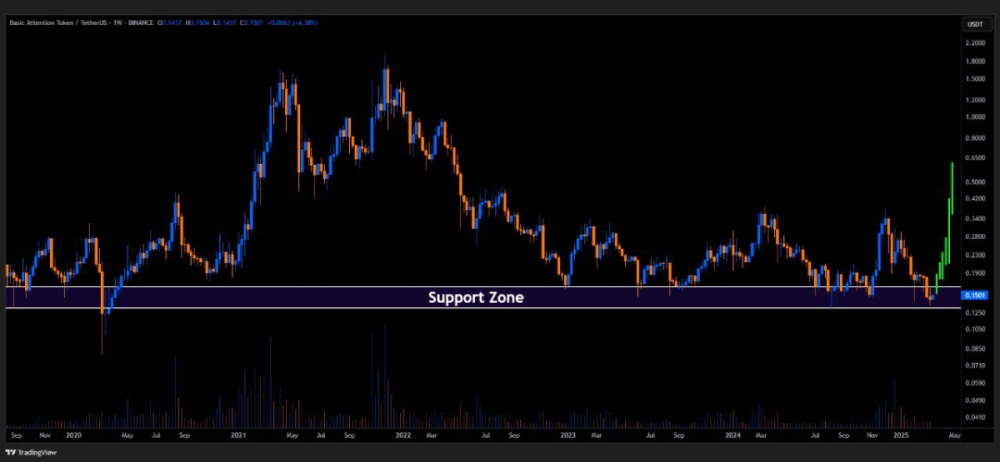
Everything posted by Adminius
-
ICO LaunchPad Addon For Bicrypto - Token Initial Offerings, Projects, Phases, Allocations
ICO LaunchPad Addon For Bicrypto - Token Initial Offerings, Projects, Phases, Allocations Introducing the ICO LaunchPad Add-on for BiCrypto: Revolutionize Your Token Initial OfferingsAdvanced Nuxt 3 Frontend: Experience a sleek and intuitive user interface, crafted with the latest Nuxt 3 technology for superior user engagement. Powerful UWS 20 Backend: Benefit from the robust and efficient UWS 20 backend framework, ensuring smooth and reliable platform operations. Comprehensive Projects Management: Effortlessly manage your ICO projects with a suite of tools designed for effective project administration. Efficient Tokens Management: Streamline your token offerings with a sophisticated system for managing various tokens. Seamless Integration with Ecosystem Addon: Enhance your ICO capabilities with full integration with the BiCrypto Ecosystem Addon. Detailed Phases Management: Organize and manage different phases of your token offerings with precision and ease. Robust Contributions Management: Keep track of all contributions with an advanced management system, ensuring accuracy and transparency. Allocations Management: Gain complete control over token allocations, enabling effective distribution and management of tokens. User-Friendly Dashboard: Provide users with an intuitive dashboard, offering a comprehensive view of their investments and activities. Dedicated Tokens Page: Feature a specialized page for tokens, showcasing details and information about various token offerings. Engaging Offering Page: Attract and inform potential investors with a dedicated offering page, highlighting key details and phases of your ICO. Support contacts if you have any inquiries please send us a ticket here: https://support.mash3div.com/ Note: this addon needs bicrypto to work Requirements (minimum): A Knowledge in running a server or any hosting with ssh and root access Node JS +18 Apache +2.4.49 Or Nginx Server with SSH that has Permissions, not shared server without any permissions VPS at least 4GB RAM to be able to execute orders smoothly Make sure the provider allows the services of trading or referral system you are going to implant Make sure the VPS country is allowed by the provider you going to purchase like Binance or Kucoin or use Ecosystem if you want global coverage without the usage of providers Security Notes: After support inquiries that require debugging any internal issues in your VPS, you always have to secure and change your credentials for security and never share them with any thirdparty If you use an unauthorized version and face any issues/errors or face security issues then we are not responsible for that. File Information Submitter Adminius Submitted 03/19/25 Category Scripts View File
-
Futures & Leverage Trading Addon For Bicrypto & Ecosystem
- 0 downloads
- Version 5.0.4
Support contacts if you have any inquiries please send us a ticket here: https://support.mash3div.com/ Note: this addon needs bicrypto to work NOTE: futures require having ecosystem addon for blockchains and base Requirements to use: - Bicrypto - Ecosystem Addon and then use those details in our platform to enjoy a top-end exchange platform without any hassle. Security Notes: After support inquiries that require debugging any internal issues in your VPS, you always have to secure and change your credentials for security and never share them with any thirdparty If you use an unauthorized version and face any issues/errors or face security issues then we are not responsible for that.35.00 USD -
Futures & Leverage Trading Addon For Bicrypto & Ecosystem
Futures & Leverage Trading Addon For Bicrypto & Ecosystem Support contacts if you have any inquiries please send us a ticket here: https://support.mash3div.com/ Note: this addon needs bicrypto to work NOTE: futures require having ecosystem addon for blockchains and base Requirements to use: - Bicrypto - Ecosystem Addon and then use those details in our platform to enjoy a top-end exchange platform without any hassle. Security Notes: After support inquiries that require debugging any internal issues in your VPS, you always have to secure and change your credentials for security and never share them with any thirdparty If you use an unauthorized version and face any issues/errors or face security issues then we are not responsible for that. File Information Submitter Adminius Submitted 03/19/25 Category Scripts View File
-
Ecommerce Addon for Bicrypto - Digital Products, Wishlist, Licenses
- 0 downloads
- Version 5.0.8
Expand Your Digital Marketplace with the Ecommerce Add-on for BiCryptoAdmin Analytics Page: Gain valuable insights with an analytics dashboard, providing detailed metrics on product performance and user engagement. Admin Products Management: Manage your digital products effectively with a comprehensive product management system, ensuring seamless operations. Integration with Various Wallets: Fully integrates with FIAT, SPOT, and FUNDING wallets, offering versatile payment options for customers. Diverse Product Types: Support for various digital product types, including Keys and Downloadables, catering to a wide range of digital goods. Categories Management: Organize products efficiently with a dynamic category management system, enhancing the shopping experience. Flexible Discounts Management: Implement and manage discount strategies effectively, attracting more customers and boosting sales. User Reviews System: Feature a user review system, allowing customers to share their experiences and feedback on products. Shop Page: A dedicated shop page, showcasing a range of digital products in an organized and attractive layout. Single Product Page: Detailed product pages for each item, providing comprehensive information and purchase options. User Orders Management: Enable users to manage their orders effectively, ensuring a smooth and transparent purchasing process. Customizable Email Templates for Transactions: Send transactional emails with customizable email templates, enhancing communication and brand consistency. Support contacts If you have any inquiries please send us a ticket here: https://support.mash3div.com/ Note: this addon needs bicrypto to work Requirements (minimum): A Knowledge in running a server or any hosting with ssh and root access Node JS +18 Apache +2.4.49 Or Nginx Server with SSH that has Permissions, not shared server without any permissions VPS at least 4GB RAM to be able to execute orders smoothly Make sure the provider allows the services of trading or referral system you are going to implant Make sure the VPS country is allowed by the provider you going to purchase like Binance or Kucoin or use Ecosystem if you want global coverage without the usage of providers Security Notes: After support inquiries that require debugging any internal issues in your VPS, you always have to secure and change your credentials for security and never share them with any thirdparty If you use an unauthorized version and face any issues/errors or security issues then we are not responsible for that.30.00 USD -
Ecommerce Addon for Bicrypto - Digital Products, Wishlist, Licenses
Ecommerce Addon for Bicrypto - Digital Products, Wishlist, Licenses Expand Your Digital Marketplace with the Ecommerce Add-on for BiCryptoAdmin Analytics Page: Gain valuable insights with an analytics dashboard, providing detailed metrics on product performance and user engagement. Admin Products Management: Manage your digital products effectively with a comprehensive product management system, ensuring seamless operations. Integration with Various Wallets: Fully integrates with FIAT, SPOT, and FUNDING wallets, offering versatile payment options for customers. Diverse Product Types: Support for various digital product types, including Keys and Downloadables, catering to a wide range of digital goods. Categories Management: Organize products efficiently with a dynamic category management system, enhancing the shopping experience. Flexible Discounts Management: Implement and manage discount strategies effectively, attracting more customers and boosting sales. User Reviews System: Feature a user review system, allowing customers to share their experiences and feedback on products. Shop Page: A dedicated shop page, showcasing a range of digital products in an organized and attractive layout. Single Product Page: Detailed product pages for each item, providing comprehensive information and purchase options. User Orders Management: Enable users to manage their orders effectively, ensuring a smooth and transparent purchasing process. Customizable Email Templates for Transactions: Send transactional emails with customizable email templates, enhancing communication and brand consistency. Support contacts If you have any inquiries please send us a ticket here: https://support.mash3div.com/ Note: this addon needs bicrypto to work Requirements (minimum): A Knowledge in running a server or any hosting with ssh and root access Node JS +18 Apache +2.4.49 Or Nginx Server with SSH that has Permissions, not shared server without any permissions VPS at least 4GB RAM to be able to execute orders smoothly Make sure the provider allows the services of trading or referral system you are going to implant Make sure the VPS country is allowed by the provider you going to purchase like Binance or Kucoin or use Ecosystem if you want global coverage without the usage of providers Security Notes: After support inquiries that require debugging any internal issues in your VPS, you always have to secure and change your credentials for security and never share them with any thirdparty If you use an unauthorized version and face any issues/errors or security issues then we are not responsible for that. File Information Submitter Adminius Submitted 03/19/25 Category Scripts View File
-
EcoSystem & Native Trading Addon for Bicrypto
- 0 downloads
- Version 5.1.1
Discover the Advanced Features of the BiCrypto Ecosystem Add-OnNative Centralized Trading System: A robust trading system that blends efficiency with user-friendliness, providing a seamless trading experience. Broad Blockchain Support: Compatible with multiple blockchains including ETH, BSC, POLYGON, FTM, OPTIMISM, ARBITRUM, BASE, and CELO, offering a versatile trading environment. Flexible Trading Fees Structure: Enjoy 0 trading fees, with the option to set taker/maker fees for different markets, giving complete control over the trading cost structure. Full Control Over Market Making: Offers comprehensive control over market making, allowing for tailored market strategies. Custodial and Non-Custodial Wallet Systems: Provides both custodial and non-custodial wallet options, catering to different security and convenience needs. Automated Deposit & Withdrawal: Streamlines the process of depositing and withdrawing funds, enhancing user convenience. Advanced Market Maker with Matching Engine System: Features a sophisticated market maker and matching engine, ensuring efficient order processing. AI Trading Robot & Orders Filler: Leverage the power of AI for automated trading and efficient order filling. Enhanced Trading Page: A user-friendly trading page designed for optimal trading efficiency. Native Charting with WebSockets: Real-time charting powered by WebSockets, providing up-to-date market data and insights. Spot & Limit Trading: Offers spot and limit trading options, with plans to introduce more trading methods. Native Orderbook: A comprehensive orderbook, offering a clear view of market orders and trading dynamics. Gas Station Network Smart Contract: Facilitates efficient gas management for blockchain transactions. Custodial Wallets Smart Contract: A secure smart contract system for managing custodial wallets. Tokens Deployment Smart Contract: Simplifies the process of deploying tokens on various blockchains. Private Ledgers with Automated Liquidity Management: Private ledger technology coupled with automated liquidity management for optimal trading. Extreme Trading Security with 2 Layers GSM Hashing: Ensures top-notch security with a two-layer GSM hashing system. Top-End Security System: A robust security framework protecting against a wide range of cyber threats. Optimized Database for Orders (ScyllaDB): Utilizes ScyllaDB for high-performance and reliable order management. Extended License FeaturesSmart contract solidity codes to be used to verify contracts on scanners like etherscan Integration of custom blockchain as free custom work Blockchains (initial v3 release, we planning to support all chains and tokens globally) ETH: 2463 tokens BSC: 2568 tokens POLYGON: 161 tokens FTM: 41 tokens ARBITRUM: 46 tokens OPTIMISM: 27 tokens Note: full tokens deployment smart contract and private ledgers for permitted and custodial wallets for native and nonpermit tokens90.00 USD -
EcoSystem & Native Trading Addon for Bicrypto
EcoSystem & Native Trading Addon for Bicrypto Discover the Advanced Features of the BiCrypto Ecosystem Add-OnNative Centralized Trading System: A robust trading system that blends efficiency with user-friendliness, providing a seamless trading experience. Broad Blockchain Support: Compatible with multiple blockchains including ETH, BSC, POLYGON, FTM, OPTIMISM, ARBITRUM, BASE, and CELO, offering a versatile trading environment. Flexible Trading Fees Structure: Enjoy 0 trading fees, with the option to set taker/maker fees for different markets, giving complete control over the trading cost structure. Full Control Over Market Making: Offers comprehensive control over market making, allowing for tailored market strategies. Custodial and Non-Custodial Wallet Systems: Provides both custodial and non-custodial wallet options, catering to different security and convenience needs. Automated Deposit & Withdrawal: Streamlines the process of depositing and withdrawing funds, enhancing user convenience. Advanced Market Maker with Matching Engine System: Features a sophisticated market maker and matching engine, ensuring efficient order processing. AI Trading Robot & Orders Filler: Leverage the power of AI for automated trading and efficient order filling. Enhanced Trading Page: A user-friendly trading page designed for optimal trading efficiency. Native Charting with WebSockets: Real-time charting powered by WebSockets, providing up-to-date market data and insights. Spot & Limit Trading: Offers spot and limit trading options, with plans to introduce more trading methods. Native Orderbook: A comprehensive orderbook, offering a clear view of market orders and trading dynamics. Gas Station Network Smart Contract: Facilitates efficient gas management for blockchain transactions. Custodial Wallets Smart Contract: A secure smart contract system for managing custodial wallets. Tokens Deployment Smart Contract: Simplifies the process of deploying tokens on various blockchains. Private Ledgers with Automated Liquidity Management: Private ledger technology coupled with automated liquidity management for optimal trading. Extreme Trading Security with 2 Layers GSM Hashing: Ensures top-notch security with a two-layer GSM hashing system. Top-End Security System: A robust security framework protecting against a wide range of cyber threats. Optimized Database for Orders (ScyllaDB): Utilizes ScyllaDB for high-performance and reliable order management. Extended License FeaturesSmart contract solidity codes to be used to verify contracts on scanners like etherscan Integration of custom blockchain as free custom work Blockchains (initial v3 release, we planning to support all chains and tokens globally) ETH: 2463 tokens BSC: 2568 tokens POLYGON: 161 tokens FTM: 41 tokens ARBITRUM: 46 tokens OPTIMISM: 27 tokens Note: full tokens deployment smart contract and private ledgers for permitted and custodial wallets for native and nonpermit tokens File Information Submitter Adminius Submitted 03/19/25 Category Scripts View File
-
Bitcoin (BTC/USDT) Technical Analysis (2H Chart - Binance)
Bitcoin (BTC/USDT) Technical Analysis (2H Chart - Binance)This chart presents a Bitcoin price analysis within a falling wedge pattern. The technical breakdown suggests two potential scenarios: a rejection and drop or a breakout after a retracement. Below is a detailed analysis: 1️⃣ Chart Structure & TrendlinesDescending Channel (Falling Wedge Formation) Bitcoin is moving within a downward-sloping channel, indicated by two black trendlines. This pattern is generally bullish when a breakout occurs, but for now, BTC remains inside the structure. Resistance & Support Levels Resistance (~83,700 - 84,000 USDT) BTC is currently approaching the upper boundary of the descending channel. The highlighted resistance box suggests a strong rejection zone. Support (~78,000 - 80,000 USDT) There is a key demand zone around 78,000 USDT, where BTC has bounced previously. A further drop could push the price to 72,000 USDT, aligning with the lower channel support. 2️⃣ Bearish Scenario (Rejection & Drop)If BTC fails to break the resistance, a rejection may cause: Initial drop to ~80,000 USDT (first support) Further decline to 78,000 USDT, possibly testing the lower trendline If selling pressure increases, BTC could touch 72,000 USDT before rebounding. The black arrows indicate the potential path of BTC towards lower supports. 3️⃣ Bullish Scenario (Breakout & Recovery)If BTC breaks above the resistance (~84,000 USDT): A retest of 86,000 - 88,000 USDT could follow. A full breakout from the wedge could push BTC beyond 92,000 USDT. However, the chart suggests BTC might first retest lower levels before a bullish move. 4️⃣ Market Sentiment & Key Levels to Watch📌 Resistance: 84,000 USDT (critical breakout point) 86,000 - 88,000 USDT (bullish confirmation) 📌 Support: 80,000 USDT (short-term support) 78,000 USDT (key zone) 72,000 USDT (major demand zone) Conclusion & Strategy✅ If BTC breaks 84,000 USDT → Bullish Continuation ❌ If rejected → Bearish move toward 78,000-72,000 USDT Currently, Bitcoin is at a decision point near the resistance. Traders should wait for confirmation before making moves. Uploading Attachment...
-
Key Observations:2
Key Observations:Descending Channel Formation: The price has been moving inside a falling wedge (downward-sloping channel), marked by two black trend lines. This suggests a bearish structure, but such patterns often result in bullish breakouts when resistance is broken. Support and Resistance Zones: Resistance Zone (~83,600 - 84,000 USDT) The price is currently testing the upper boundary of the descending channel. This area has acted as strong resistance multiple times. Support Zones (~78,000 USDT & ~73,500 USDT) The lower support levels have been respected multiple times, making them critical in case of a rejection. Breakout Indication: Unlike the previous chart (which suggested a potential drop), this one now indicates a breakout scenario. A black curved line is drawn, suggesting an upward movement above the descending trendline. If BTC breaks and holds above this resistance, it could signal a trend reversal toward a bullish scenario. Potential Price Targets: The breakout could lead BTC to test 86,000 - 88,000 USDT (next resistance zone). If momentum continues, BTC might even push toward 92,000+ USDT. Current Market Position: The price is trading at 83,600.1 USDT, just below the resistance zone. Bulls need to confirm the breakout by holding above the descending trendline. Conclusion:Bullish Scenario: A successful breakout above 84,000 USDT could push BTC toward 86,000 - 88,000 USDT and beyond. This would indicate a shift in trend from bearish to bullish. Bearish Rejection: If BTC fails to break out, a rejection could bring the price back to 80,000 USDT and possibly lower to 73,500 USDT. Key Levels to Watch: Breakout Level: ~84,000 USDT Target Levels: ~86,000 USDT → ~88,000 USDT → ~92,000 USDT Support Levels: ~78,000 USDT → ~73,500 USDT Uploading Attachment...
-
Key Observations:
This chart represents a technical analysis of Bitcoin (BTC/USDT) on Binance using a 2-hour timeframe. Below is a detailed breakdown of the chart elements and their implications: Key Observations:Descending Channel Formation: The price action is moving within a downward-sloping channel, marked by two black trend lines. This pattern indicates a bearish trend where the price is continuously making lower highs and lower lows. Support and Resistance Zones: Resistance Zone (Highlighted Rectangle at ~84,000 USDT): The price has attempted to break above this zone multiple times but has been rejected. This suggests strong selling pressure at this level. Support Zones (Highlighted Rectangles at ~73,500 USDT and ~71,000 USDT): These areas have been identified as potential support levels where buyers may step in. If the price breaks below these levels, further downside can be expected. Projected Price Movement (Black Curved Lines): The chart suggests a bearish continuation with possible bounces from the lower support levels. A potential drop to around 73,500 USDT is expected. If the price breaks this level, it might test lower supports around 71,000 USDT. After reaching these lower support levels, a possible reversal or bullish reaction may occur. Current Price Position: The current price is 83,643.7 USDT, trading near resistance. If it fails to break this resistance, a downward move is likely. Trend Implications: The descending structure suggests that Bitcoin is in a correction phase. A breakout above the resistance could invalidate the bearish scenario and lead to bullish momentum. Conversely, if Bitcoin continues to get rejected at resistance, a drop toward 73,500 USDT and possibly lower levels could occur. Conclusion:Bearish Scenario: Price follows the projected black line, drops to support (~73,500 USDT) before bouncing. Bullish Breakout: If Bitcoin breaks above the resistance (~84,000 USDT), a move toward 86,000-88,000 USDT could happen. Key Levels to Watch: Resistance: 84,000 - 85,000 USDT Support: 73,500 USDT, 71,000 USDT Potential lower target: 67,000 USDT (if support fails) This analysis suggests caution in the current market structure, with a preference for short positions unless a clear breakout occurs.
-
🚀 SPOT Trading Signal! 🚀
🚀 AWESOME PROFIT! 🚀 💎 Our #OPEN/USDT transaction exceeded targets and reached 0.005831! 📈🔥 🎯 Entry Level: 0.00122 🏆 Profit to the Last Level: 378% 🚀💰 Those who took advantage of this opportunity increased their investments by 4.78x! 🎉🎯 📊 Technical analysis continues to win! Stay tuned for more opportunities! 🚀🔥
-
BTC Dominance (BTC.D) 4H Chart Analysis
BTC Dominance (BTC.D) 4H Chart Analysis 📊 Bitcoin Dominance is at a Key Decision Point! 📊 🔹 Current BTC.D: 61.60% 🔹 Resistance Zone: 62.00% - 62.40% 🔹 Support Zones: ✅ Immediate Support: 61.40% ✅ Major Support: 60.40% 📉 Bearish Scenario: BTC Dominance is forming a descending triangle pattern, indicating a potential breakdown if support fails. A break below 61.40% could trigger a further drop towards the 60.40% major support zone. This could signal strength in altcoins, as capital flows out of BTC. 📈 Bullish Scenario: If BTC.D manages to hold above 61.40% and breaks the descending trendline, we could see a move towards 62.40%. A breakout above 62.40% could push BTC dominance towards new highs, potentially weakening altcoin momentum. 🚀 Key Levels to Watch: 🔸 Breakout Above 62.40% → BTC Strengthens, Alts Suffer 🔸 Breakdown Below 61.40% → Altseason Incoming? 🔥 Stay tuned for the next move! Do you think BTC dominance will break up or down? Comment below! 👇 #BTC #BitcoinDominance #CryptoAnalysis #Altcoins
-
🚀 SPOT Trading Signal! 🚀
🚀 SPOT Trading Signal! 🚀 💎 #OPEN/USDT 💎 🎯 Entry Level: 0.00122 🔥 Profit Targets: ✅ 1. 0.00138 ✅ 2. 0.00171 ✅ 3. 0.00183 ✅ 4. 0.00217 ✅ 5. 0.00356 ⚠️ Stop Level: 0.000789 ⏳ Don't miss the opportunity! 🚀📈
-
Bitcoin (BTC/USDT) Teknik Analizi (2H Grafik - Binance)
Bitcoin (BTC/USDT) Technical Analysis (2H Chart - Binance)1. Price Action & Market StructureThe chart displays Bitcoin’s price movement on a 2-hour timeframe. Current price: **$81,691 Recent price range: **$81$81,500 (low) – $81,700 (high) The price is currently in a downtrend,lower highs and lower lows. A key support zone is highlighted$79,600 – $80,400, wstrong demand area. 2. Key Support & Resistance LevelsSupport Zone (Demand Area): $79,600 – $80,400 (Highlighted Box) This zone has historically acted as a strong support, leading If the price holds above this area, a bounce toward resistance levels is likely. A breakdown below this zone may trigger further downside pressure. Immediate Resistance: $82,500 – $83,000 Bitcoin has faced rejection multiple times in this region. A confirmed breakout above this zone could lead to a rally toward $85,000 – $87,000. Major Resistance Levels: $85,000 – $86,500 (Key $88,000 – $90,000 ( 3. Trend Analysis & Technical IndicatorsCandlestick Patterns: Recent candles show rejections at higher levels,selling pressure. A bullish engulfing candle near the Trend Direction: The short-term trend is bearish, but$79,600 – $80,400 support zone Liquidity Zones: There is a possibility of a liquidity grab near the support area before a significant move. Potential Bearish Breakdown: If the price falls below $79,600, it could lead to further selling. Next support levels: $77,250 – $78,000 $75,000 – $76,000 4. Potential Scenarios & Trading StrategiesBullish Scenario (Bounce from Support)If Bitcoin respects the $79,600 – $80,400 zone, a bounce toward the $82,500 – $83,000 resistance is likely. A break and close above $83,000 could trigger a rally toward: $85,000 – $86,500 $88,000 – $90,000 (strong psychological level) Bearish Scenario (Break Below Support)If Bitcoin breaks below $79,600, expect further downside. Next downside targets: $77,250 – $78,000 (first major support) $75,000 – $76,000 (stronger demand zone) Bearish confirmation: A high-volume breakdown below $79,600. Retest failure of support as resistance. 5. Market Sentiment & ConclusionKey Level to Watch: $79,600 – $80,400 (support zone) Market Sentiment: Neutral to Bearish Trading Strategy: Long Position: If price shows a bullish reaction near support. Short Position: If price breaks below $79,600 with strong volume.
-
GMX/USDT – Daily Chart Analysis
GMX/USDT – Daily Chart AnalysisOverview:The chart represents GMX vs. Tether (USDT) on Binance (1D timeframe). The price is currently trading at $14.30, showing a prolonged downtrend. A descending resistance line is acting as a strong barrier to price recovery. Key Observations:Descending Resistance Line: The price has been consistently rejected at this trendline. This descending resistance needs to be broken for a bullish reversal. Potential Breakout Setup: If GMX successfully breaks above the descending resistance, a strong bullish move could follow. The green arrow suggests a breakout target around $25-$26, which aligns with previous key levels. Current Support Levels: The recent bounce from $13-$14 suggests buyers are defending this zone. If the price fails to break resistance, another retest of support levels is likely. Bullish vs. Bearish Scenarios: Bullish: A breakout above resistance could trigger a strong rally toward $20-$25. Bearish: If the resistance holds, GMX may continue its downtrend or retest support at $12-$13. Trading Strategy: Breakout traders should watch for a confirmed daily close above resistance with strong volume. Risk management is crucial, with stop-loss placements below recent support levels. Conclusion:GMX is approaching a key decision point. If it breaks the descending resistance, a strong bullish rally toward $25+ could unfold. However, failure to break above could lead to further downside pressure. Traders should watch for confirmation signals before entering positions.
-
Basic Attention Token (BAT/USDT) – Weekly Chart Analysis
Basic Attention Token (BAT/USDT) – Weekly Chart AnalysisOverview:The chart represents Basic Attention Token (BAT) vs. Tether (USDT) on Binance (1W timeframe). The current price is $0.1501, with a strong bounce from the identified support zone. The token has experienced a significant price surge, breaking above key resistance levels. Key Observations:Major Support Zone: The highlighted support zone has historically acted as a strong demand area, preventing further downside. This level has held multiple times since 2020, confirming it as a key accumulation zone. Recently, the price bounced strongly from this level, signaling renewed buying interest. Breakout & Bullish Momentum: Following the retest of the support zone, BAT has exploded upwards with strong bullish candles. The sharp increase in volume indicates growing interest and accumulation. This breakout suggests a potential trend reversal or at least a medium-term rally. Next Resistance Levels: The price has already gained strong momentum, but some potential resistance zones to watch: $0.35 - $0.40 → Previous consolidation area. $0.50 - $0.60 → Psychological resistance and past key levels. $1.00+ → If the bullish momentum continues, a return to the 2021 highs could be possible. Market Sentiment & Strategy: The strong breakout and volume surge suggest continuation towards higher levels. A healthy pullback or retest of previous breakout levels could present good re-entry opportunities. Traders should monitor weekly closes to confirm sustained momentum. Potential Trade Setups:Bullish Scenario: If momentum continues, BAT could test $0.35 - $0.40 in the short term. A successful breakout above $0.50 could open doors for a rally toward $1.00 in the coming months. Bearish Scenario: If BAT faces rejection at higher resistance, a pullback to $0.20 - $0.25 may offer a better entry point. Losing the support zone (~$0.12 - $0.15) would invalidate the bullish structure, leading to further downside risks. Conclusion:BAT has made a strong recovery from its long-term support zone, signaling bullish momentum. If the trend continues, the next key resistance zones ($0.35 - $0.50) could be tested soon. However, traders should watch for possible pullbacks for better entries.
-
Bitcoin CME Futures – 1H Chart Analysis
Bitcoin CME Futures – 1H Chart AnalysisOverview:The chart represents the Bitcoin CME Futures (1-hour timeframe). The current price is $82,600. There is an identified CME gap between $83,725 - $83,955. Key Observations:CME Gap Formation: A CME gap occurs when there is a price difference between the market close on Friday and the opening price on Sunday. The highlighted zone ($83,725 - $83,955) represents an unfilled gap, a common phenomenon in Bitcoin CME futures. Current Price Action: Bitcoin is currently trading at $82,600, below the CME gap. The price has been experiencing high volatility, with strong bullish and bearish movements. Technical Levels: Resistance: The primary resistance zone is at the CME gap level ($83,725 - $83,955). Support: Key support levels are $82,000 and $81,500, where price may find stability before attempting an upward move. Market Sentiment & Strategy: Historically, CME gaps tend to get filled, meaning Bitcoin may move towards the $83,725 - $83,955 range. If price breaks above $83,955, we may see further bullish continuation. However, if Bitcoin fails to reclaim the gap, a retracement towards $82,000 or lower is possible. Potential Trade Setups:Bullish Scenario: If BTC starts gaining momentum, traders may look for long positions targeting the CME gap fill. Bearish Scenario: If rejection occurs at resistance, short opportunities towards $82,000 - $81,500 could emerge. Conclusion:Bitcoin's CME gap remains a crucial level to watch. Traders should monitor price action around $83,725 - $83,955 for potential movement. A breakout above the gap may trigger further upside, while failure to reclaim could lead to a pullback.
-
Introduction to eBooks
In today's digital age, eBooks have revolutionized the way we consume and interact with written content. These electronic versions of books offer unparalleled convenience, accessibility, and flexibility to readers around the world. From the early days of simple text-based formats to the current era of multimedia-rich experiences, eBooks have undergone a remarkable evolution. This article explores the various facets of eBooks, from their advantages and popular formats to their impact on the publishing industry and future trends shaping the landscape of digital reading. Introduction to eBooks What are eBooks? Ebooks are electronic versions of books that can be read on devices like e-readers, tablets, or smartphones. Think of them as books' cool and tech-savvy cousins. History of eBooks Ebooks have come a long way since their inception in the 1970s. From clunky computers to sleek e-readers, the evolution of ebooks is a journey worth exploring. Advantages of eBooks Convenience and Portability Carrying around a library in your pocket? Yes, please! Ebooks make reading on-the-go a breeze, perfect for busy bookworms. Cost-effectiveness Say goodbye to pricey hardcovers. Ebooks are often more budget-friendly, saving both space on your bookshelf and money in your wallet. Customization and Accessibility Features Font sizes, colors, and background settings - ebooks let you tailor your reading experience to suit your preferences. Plus, accessibility features make reading easier for everyone. Evolution of eBooks From Print to Digital From turning physical pages to swiping on screens, ebooks have revolutionized the way we consume written content. The future is digital, baby! Technological Innovations in eBook Development Interactive elements, multimedia content, and enhanced reading experiences - the tech advancements in ebook development continue to push the boundaries of traditional reading. Popular eBook Formats EPUB The go-to format for most e-readers, EPUB offers a flexible reading experience with reflowable text and resizable images. PDF The trusty PDF format ensures that your ebook looks the same on any device, maintaining formatting and design consistency. MOBI Developed by Amazon for Kindle devices, MOBI files deliver a user-friendly reading experience with adjustable text sizes and bookmarking capabilities. How to Access and Read eBooks eBook Readers and Apps To dive into the world of eBooks, you can use dedicated eBook readers like Kindle, Nook, or Kobo. Alternatively, you can opt for apps like Apple Books, Google Play Books, or Amazon Kindle app on your smartphone or tablet. Pick your poison and start reading! Downloading and Purchasing eBooks Downloading and purchasing eBooks is as easy as pie - just like adding items to your online shopping cart. Browse through online stores like Amazon, Apple Books, or Google Play, find your desired eBook, hit "buy," and voilà - it's ready to read on your device. Reading Experience and Features Reading eBooks is a treat for bookworms on the go. Customize your reading experience by adjusting font sizes, lighting, and even switching to dark mode for those nighttime reading marathons. Plus, enjoy handy features like bookmarks, highlights, and integrated dictionaries for a seamless reading experience. Impact of eBooks on Publishing Industry Changes in Distribution and Marketing eBooks have revolutionized the publishing industry by offering instant distribution worldwide. Traditional publishing houses have adapted to digital formats, allowing for broader reach and more accessible marketing strategies. Self-publishing and Indie Authors eBooks have given rise to a wave of indie authors and self-publishing opportunities. Writers can now bypass traditional publishing routes, directly reaching audiences with their works. This democratization of publishing has led to a diverse literary landscape. Future Trends in eBooks Enhanced Interactivity and Multimedia Integration The future of eBooks is bright with enhanced interactivity and multimedia integration. Imagine immersive experiences with audio, video, and interactive elements seamlessly woven into your reading journey. Get ready to be entertained like never before! Global Market Expansion and Localization eBooks are breaking down geographical barriers, paving the way for global market expansion and localization. Readers worldwide can access a vast array of literature in their preferred languages, opening doors to diverse storytelling traditions and voices. Embrace the literary world without borders!As eBooks continue to shape the literary landscape and redefine the way we engage with content, it is evident that they have become an integral part of our reading experience. With ongoing technological advancements and a growing preference for digital consumption, the future of eBooks holds exciting possibilities for both readers and authors alike. Whether it's the convenience of accessing a vast library in the palm of your hand or the creative opportunities presented by interactive features, the world of eBooks is poised for continued innovation and expansion, ensuring that the joy of reading remains vibrant in the digital age. Frequently Asked Questions about eBooks 1. Are all eBooks compatible with all devices? 2. Can I lend or share an eBook with others? 3. Do eBooks offer the same reading experience as physical books? 4. How can authors benefit from publishing eBooks?
-
Introduction to Web Software Training
In today's digital age, web software training has become a crucial component for individuals looking to thrive in the ever-evolving tech industry. Understanding the fundamentals of web development, mastering popular tools and platforms, and staying updated on industry trends are essential for building a successful career in this field. This article provides a comprehensive guide to web software training, covering key concepts, hands-on practice opportunities, advanced topics, and insights into the future of web development. Whether you're a beginner looking to kickstart your journey or a seasoned professional seeking to expand your skill set, this article aims to equip you with the knowledge and resources needed to excel in the dynamic world of web software. # Introduction to Web Software Training ## Understanding the Importance of Web Software Training In a world where websites wield more power than fairy godmothers, knowing your way around web software is crucial. Web software training is like the magic wand that helps you bring your digital dreams to life. ## Benefits of Investing in Web Software Training From boosting your career prospects to enhancing your digital prowess, investing in web software training is like giving your resume a shiny upgrade. Who knew learning HTML could be the secret to unlocking new job opportunities?! # Key Concepts and Principles ## HTML, CSS, and JavaScript Fundamentals Forget Harry, Hermione, and Ron - the real magical trio in the digital world is HTML, CSS, and JavaScript. Master these fundamentals, and you'll be casting spells on web pages in no time. ## Responsive Design and User Experience (UX) Creating a website that's as responsive as a cat to a can opener is the goal. Learn the art of responsive design and UX to keep visitors on your site longer than they spend deciding what to watch on Netflix. ## Version Control Systems: Git and GitHub Git and GitHub are like Batman and Robin of the coding world - they swoop in to save the day when things go awry. Mastering version control is the key to keeping your code in check and your sanity intact. # Popular Web Software Tools and Platforms ## Introduction to Content Management Systems (CMS) Gone are the days of wrestling with code to update your website. CMS platforms like WordPress and Joomla are here to make your life easier. Think of them as the fairy godmothers of content creation. ## Exploring Front-End Frameworks: Bootstrap, React, Angular Front-end frameworks are like the cool kids in school - everyone wants to hang out with them. Dive into the world of Bootstrap, React, and Angular to level up your front-end development game. ## Back-End Development with Node.js, Django, or Ruby on Rails While front-end development may be the flashy superhero, back-end development is the silent guardian. Explore the realms of Node.js, Django, and Ruby on Rails to become the hero your website deserves. # Structured Learning Paths and Courses ## Online Platforms for Web Software Training Who needs a classroom when you have the internet at your fingertips? Online platforms like Udemy, Coursera, and Codecademy offer a treasure trove of web software training courses. It's like having a digital Hogwarts at your disposal. ## Certifications and Accreditation Programs Worried your web skills won't get the recognition they deserve? Fear not! Certifications and accreditation programs are here to bestow upon you the digital badges of honor that make employers swoon. It's like getting a gold star on your coding report card.# Hands-On Practice and Project-Based Learning If you're looking to dive into the world of web software training, get ready for some serious hands-on action. This isn't your grandma's knitting class – this is about building websites and web applications from scratch. With a focus on practical skills and project-based learning, you'll get your hands dirty right from day one. No fluff, just real-world experience that will set you up for success in the fast-paced web development industry. ## Building Websites and Web Applications from Scratch Forget about theory-heavy lectures and endless PowerPoint slides. In web software training, it's all about rolling up your sleeves and getting down to business. From creating basic websites to developing complex web applications, you'll learn how to bring your ideas to life using the latest tools and technologies. With guidance from experienced instructors and plenty of practice, you'll be amazed at what you can achieve. ## Collaborative Projects and Hackathons In the world of web software training, collaboration is key. Whether you're working on a group project or participating in a hackathon, you'll learn the art of teamwork and the power of collective brainstorming. These hands-on experiences will not only sharpen your technical skills but also teach you how to communicate effectively, think creatively, and problem-solve like a pro. Plus, they're a ton of fun – who doesn't love pulling an all-nighter coding session with a bunch of like-minded geeks? # Advanced Topics and Specializations Once you've mastered the basics, it's time to level up with advanced topics and specializations. From fine-tuning your front-end development techniques to mastering database management and integration, these advanced courses will take your skills to the next level. Get ready to go beyond the basics and become a true web software ninja. ## Advanced Front-End Development Techniques Ready to take your front-end skills to the next level? In this advanced course, you'll learn how to create stunning user interfaces, optimize website performance, and implement cutting-edge front-end frameworks. Say goodbye to boring static websites and hello to dynamic, interactive web experiences that will leave users in awe. Whether it's mastering CSS animations or diving deep into JavaScript frameworks, this course will push you to your limits and beyond. ## Database Management and Integration In the world of web software, data is king. In this specialized course, you'll learn how to design, implement, and manage databases like a pro. From SQL to NoSQL, you'll explore different database technologies and discover the best practices for integrating them into your web applications. By the end of this course, you'll be a database wizard, ready to tackle any data-related challenge that comes your way. # Industry Trends and Future Outlook What's hot in the world of web development? What does the future hold for web software professionals? In this section, we'll explore emerging technologies, remote work opportunities, and the latest industry trends that are shaping the future of web development. Stay ahead of the curve and get a glimpse of what's to come in this ever-evolving field. ## Emerging Technologies in Web Development From AI-powered chatbots to blockchain-based applications, the world of web development is constantly evolving. In this section, you'll get a sneak peek at the latest emerging technologies that are revolutionizing the way we build and interact with websites and web applications. Stay informed, stay curious, and be ready to adapt to the fast-paced world of tech. ## Remote Work Opportunities for Web Software Professionals Say goodbye to the traditional 9-to-5 office grind and hello to the world of remote work. In this section, we'll explore the growing trend of remote work opportunities for web software professionals. Whether you're freelancing from a beach in Bali or working for a tech giant from the comfort of your home office, the world is your oyster. Discover the perks and challenges of remote work and learn how to thrive in this flexible, digital nomad-friendly world.In conclusion, web software training offers a gateway to endless possibilities in the digital realm. By investing in continuous learning, practical experience, and staying attuned to industry advancements, individuals can position themselves for success in the competitive landscape of web development. Whether aspiring to launch a career in front-end design, back-end development, or specialized areas within web software, the journey of training and upskilling is a rewarding one that opens doors to creativity, innovation, and professional growth. Embrace the opportunities that web software training presents, and embark on a fulfilling path towards mastering the art of building impactful online experiences. Frequently Asked Questions (FAQ) 1. What are the essential skills needed for web software training? 2. How can I choose the right web software training program or course? 3. Is prior coding experience necessary to enroll in web software training? 4. What career opportunities can arise from completing web software training?
-
Risks and Challenges in the Crypto Space
Cryptocurrency has captured the attention of investors, technologists, and the general public alike, revolutionizing the way we perceive and interact with money. In this era of digital finance, understanding the fundamentals of cryptocurrency and blockchain technology is essential for anyone looking to navigate the rapidly evolving landscape of virtual assets. This article serves as a comprehensive guide to crypto training, exploring the benefits, risks, and opportunities associated with this burgeoning industry. From the basics of blockchain to the intricacies of investing in popular cryptocurrencies, join us on a journey to demystify the world of digital finance and discover the potential that awaits in the realm of crypto. ### Introduction to Cryptocurrency #### What is Cryptocurrency? Cryptocurrency is digital money that uses cryptography for security and operates independently of a central authority, like a government or bank. In simpler terms, it's like virtual money that's as secure as a secret agent's briefcase. #### A Brief History of Cryptocurrency Cryptocurrency made its debut in 2009 with the launch of Bitcoin by an elusive person or group known as Satoshi Nakamoto. Since then, a whole bunch of other cryptocurrencies have popped up faster than avocado toast on brunch menus. ### Benefits of Crypto Training #### Enhanced Understanding of Digital Assets Crypto training helps you dive deep into the world of digital assets, so you can tell your Bitcoin from your Bitconnect with confidence. Knowledge is power, my friends. #### Opportunities for Financial Growth With the right crypto know-how, you can ride the digital wave to potential financial gains. Who doesn't want a chance at turning their virtual coins into real-world bling? ### Understanding Blockchain Technology #### Exploring the Basics of Blockchain Blockchain is like the trustworthy sidekick of cryptocurrency, keeping all transactions secure and transparent. It's a digital ledger that's as dependable as your grandma's secret cookie recipe. #### Applications of Blockchain Beyond Cryptocurrency Believe it or not, blockchain isn't just about trading digital coins. It's being used in industries like healthcare, supply chain management, and even voting systems. It's like the Swiss Army knife of technology. ### Popular Cryptocurrencies and Their Uses #### Overview of Major Cryptocurrencies (e.g., Bitcoin, Ethereum) Bitcoin may be the rockstar of cryptocurrencies, but Ethereum and others are playing catch-up with their own unique features. It's like a digital battle of the bands, but with more code and less guitar smashing. #### Real-World Applications of Different Cryptocurrencies Cryptocurrencies aren't just for buying virtual kittens or dodging taxes—they're being used for things like cross-border payments, decentralized finance, and even funding creative projects. The future is here, folks, and it's looking pretty darn digital. Risks and Challenges in the Crypto Space Volatility and Market Fluctuations Ah, the wild ride of crypto! Brace yourself for rollercoaster-like price swings that can leave you exhilarated or reaching for the motion sickness meds. Regulatory Concerns and Security Risks Picture this: navigating through a maze of evolving regulations and dodging cyber threats like a spy in a James Bond film. Stay sharp, my friend. Investing in Cryptocurrency Strategies for Crypto Investment It’s like playing chess, but with money. Develop a game plan, study the board (aka the market), and make your moves wisely to conquer the crypto realm. Factors to Consider Before Investing Think of this as a checklist before diving in: risk appetite, goals, research, and a sprinkle of gut feeling. Remember, FOMO is not an investment strategy. Security and Best Practices in Crypto Trading Cryptocurrency Wallets and Security Measures Wallets are not just for your loose change. Safeguard your digital assets with top-notch security features and be your own crypto-bodyguard. Tips for Secure Trading and Avoiding Scams Scammers lurk in the shadows of the crypto jungle like sneaky chameleons. Stay ahead with caution, skepticism, and a healthy dose of “too good to be true” radar. Future Trends in the Crypto Industry Emerging Technologies Shaping the Crypto Landscape Gaze into the crystal ball of blockchain and see the future unfold with technologies like DeFi, NFTs, and more. It’s like sci-fi, but with real-world implications. Potential Developments and Growth Opportunities The crypto universe is expanding faster than the universe itself. Keep an eye out for new projects, partnerships, and moonshot ideas that could launch you to financial galaxies far, far away.In conclusion, crypto training offers a pathway to not only financial empowerment but also a deeper understanding of the transformative potential of blockchain technology. By equipping oneself with knowledge and best practices in the crypto space, individuals can navigate the complexities of this new digital economy with confidence and foresight. As the crypto industry continues to evolve and innovate, staying informed and adaptable will be key to seizing the opportunities that lie ahead. Embrace the world of cryptocurrency with curiosity and caution, and embark on a journey that could shape your financial future in profound ways. Frequently Asked Questions about Crypto Training 1. What is the importance of understanding blockchain technology in crypto training? 2. How can individuals mitigate the risks associated with investing in cryptocurrencies? 3. Are there specific security measures one should follow when engaging in crypto trading? 4. What are some emerging trends that could shape the future of the cryptocurrency industry?
-
Understanding Automation in the Modern Workplace
Automation training plays a crucial role in the ever-evolving landscape of technology and business operations. As industries strive for greater efficiency, accuracy, and scalability, the adoption of automation has become a necessity. This article provides a comprehensive overview of automation training, emphasizing its importance, key concepts, popular tools and technologies, best practices, training methods, resources, and career opportunities. By delving into these aspects, individuals and organizations can gain a deeper understanding of how automation training can drive success in the digital age. 1. Introduction to Automation Understanding Automation in the Modern Workplace Automation is like having a personal assistant who can handle repetitive tasks without ever getting tired or bored. In the modern workplace, automation plays a crucial role in streamlining processes, saving time, and reducing human error. It's like magic, but with lines of code instead of a wand. 2. Importance of Automation Training Enhancing Efficiency and Productivity through Automation Automation training is not just about learning new skills; it's about unleashing the full potential of technology to boost efficiency and productivity. By understanding how to harness automation tools effectively, you can free up time for more strategic tasks and avoid drowning in a sea of mundane work. Who wouldn't want a bit of extra time for a coffee break or to browse cat videos on the internet? 3. Key Concepts in Automation Overview of Automation Principles When it comes to automation, it's all about making things run smoother than a greased-up penguin on ice. Understanding key principles like workflow automation, decision-making algorithms, and data processing is essential to becoming an automation ninja. It's like being the conductor of a symphony, but instead of musicians, you're orchestrating software and hardware to create a harmonious workflow. Types of Automation Systems Automation systems come in various shapes and sizes, like the flavors of ice cream at your favorite gelato shop. From robotic process automation (RPA) to cognitive automation and everything in between, each type has its unique strengths and applications. Knowing which system to use in different scenarios is key to mastering the art of automation and avoiding using a sledgehammer when a feather duster would do. 4. Popular Automation Tools and Technologies Introduction to Leading Automation Tools Ready to dive into the world of automation tools? Whether you're a fan of open-source platforms like Selenium or commercial solutions like UiPath, there is a vast array of tools available to suit your automation needs. Think of it as picking your favorite superhero - each tool has its superpowers ready to help you conquer automation challenges. Comparing Automation Technologies With so many automation technologies out there, it can feel like trying to choose a favorite dessert at a buffet. By comparing factors like ease of use, scalability, and integrations, you can find the perfect match for your automation journey. Remember, just like dating, finding the right technology takes time and a bit of trial and error. 5. Best Practices for Automation Training Effective Strategies for Learning Automation Learning automation can be as fun as teaching your pet rock to fetch! Well, almost. To make the process smoother, try breaking down complex concepts, practicing regularly, and finding your inner tech wizard. Tips for Implementing Automation Best Practices When diving into automation, remember to start small like choosing a simple task to automate before tackling the big boys. Don't forget to keep exploring new tools and techniques like a curious cat on the prowl for knowledge. 6. Automation Training Methods and Resources Traditional vs. Online Automation Training Deciding between traditional classroom training or online courses? It's like choosing between a vintage vinyl record or a streaming playlist. Both have their charm, but online resources often offer flexibility and updated content. Recommended Automation Training Platforms Ready to level up your automation game? Check out platforms like Udemy, Coursera, or even YouTube for tutorials that are as informative as your grandma's secret cookie recipe. 7. Automation Certification and Career Opportunities Benefits of Automation Certification Getting certified in automation is like adding extra sprinkles to your career cupcake. It can boost your credibility, open doors to new opportunities, and make you feel as fancy as a robot in a tuxedo. Exploring Career Paths in Automation Industry From QA automation engineers to RPA developers, the automation industry is buzzing with career options hotter than a freshly brewed cup of coffee. So go ahead, explore, experiment, and find your perfect match in this tech-savvy world.In conclusion, automation training equips individuals with the skills and knowledge needed to thrive in a rapidly advancing technological environment. By embracing automation and investing in training programs, professionals can enhance their productivity, efficiency, and competitiveness. As automation continues to revolutionize industries worldwide, staying abreast of the latest trends and best practices through ongoing training will be vital for success in the digital era. FAQ 1. Why is automation training important? 2. What are some popular automation tools that individuals can learn through training? 3. How can professionals best implement automation best practices learned through training in their work? 4. Are there specific certifications available for automation training, and how can they benefit one's career?
-
Introduction to Programming Training
Programming training is a crucial component in the ever-evolving landscape of technology and innovation. As industries continue to digitize and automate, the demand for skilled programmers has never been higher. In this article, we will explore the significance of programming training, the various benefits it offers, different types of training programs available, and essential tips for success. Additionally, we will delve into future trends shaping programming training and showcase real-world case studies that highlight the transformative impact of investing in programming education. Introduction to Programming Training So you've decided to dive into the world of programming training—brace yourself for a rollercoaster ride of logic, frustration, and ultimately, triumph. Defining Programming Training Programming training involves learning the languages and skills required to write code that computers can understand and execute. It's like teaching your computer to speak a new language—albeit one with a lot more semicolons. Importance of Learning Programming In today's digital age, knowing how to code is like having a superpower. From creating websites and apps to automating tasks, programming skills open up a world of possibilities and opportunities. Benefits of Programming Training Buckle up, because the benefits of programming training go beyond just impressing your friends with cool tech tricks. Enhanced Career Opportunities With tech jobs on the rise, learning programming can turn you into a hot commodity in the job market. Whether you dream of being a software engineer or a data analyst, coding skills are a valuable asset. Improved Problem-Solving Skills Coding is like solving a puzzle—it challenges you to think logically, break down complex problems, and find creative solutions. These problem-solving skills are not only handy in programming but also in everyday life. Types of Programming Training Programs When it comes to programming training, there's no shortage of options to choose from. Here are a couple of popular paths you can take: Online Courses From platforms like Codecademy to Udemy, online courses offer flexibility and convenience for beginners and seasoned pros alike. You can learn at your own pace and in the comfort of your pajamas—because who said coding can't be cozy? Bootcamps If you prefer a more intensive and immersive experience, coding bootcamps might be your jam. These short, intensive programs are like coding bootcamps for your brain, helping you learn fast and focus on practical skills. Choosing the Right Programming Training Course Ready to embark on your coding journey? Here are some tips to help you pick the perfect programming training course: Evaluating Course Content Look for courses that cover the programming languages and concepts you're interested in learning. Whether it's Python, JavaScript, or machine learning, make sure the course aligns with your goals and interests. Considerations for Different Learning Styles Are you a visual learner who loves interactive tutorials, or do you thrive in a classroom setting with hands-on projects? Consider your learning style and preferences when choosing a programming training program to ensure maximum success and enjoyment. Practical Tips for Success in Programming Training Setting Clear Goals Setting clear goals is like using GPS for your programming journey - it helps you stay on track and reach your destination efficiently. Whether your goal is to master a specific language or complete a project, clarity is key to staying motivated and focused. Utilizing Practice Exercises Practice makes progress in the world of programming. Just like mastering a musical instrument or a sport, the more you practice coding, the better you become. Utilize practice exercises to reinforce your learning, build muscle memory, and tackle real-world challenges with confidence. Future Trends in Programming Training Integration of AI and Machine Learning As technology advances, programming training is embracing AI and machine learning to enhance learning experiences. From personalized recommendations to adaptive learning algorithms, these technologies are reshaping how we learn to code, making training more efficient and effective. Personalized Learning Paths One size doesn't fit all in programming training. The future holds personalized learning paths tailored to individual learners' needs, goals, and learning styles. By adapting content and pacing to each learner, training programs can maximize engagement and success. Case Studies: Successful Implementation of Programming Training Company A: Upskilling Employees with Programming Training Company A recognized the importance of staying ahead in the digital age and invested in programming training for its employees. By upskilling their workforce, they not only improved job satisfaction but also boosted productivity and innovation within the company. Individual B: Transitioning Careers through Programming Training Individual B decided to pivot their career by diving into programming training. With dedication and hard work, they successfully transitioned into a tech role, showcasing the transformative power of coding skills in unlocking new opportunities and career paths. Conclusion: The Importance of Ongoing Learning in Programming In the ever-evolving world of technology, ongoing learning is not just a choice but a necessity in programming. Embrace continuous learning to adapt to new trends, technologies, and challenges, ensuring your skills remain sharp and marketable in the dynamic landscape of programming. Stay curious, stay hungry, and keep coding!In conclusion, programming training is not just a pathway to acquiring technical skills but a gateway to unlocking new opportunities and staying ahead in the dynamic world of technology. By consistently learning and adapting to emerging trends, individuals and organizations can harness the power of programming to drive innovation and success. Embracing the importance of ongoing learning in programming is key to thriving in an increasingly digital future. Frequently Asked Questions 1. How do I know if programming training is right for me? 2. What are the key factors to consider when choosing a programming training course? 3. Are there any specific programming languages that are more in-demand for training? 4. How can programming training benefit individuals in non-technical fields?
-
Introduction to Artificial Intelligence Training
Artificial intelligence (AI) training plays a pivotal role in shaping the future of technology and innovation. As organizations increasingly rely on AI to drive efficiencies and enhance decision-making processes, the demand for skilled professionals in this field continues to soar. In this article, we delve into the landscape of artificial intelligence training, exploring its various types, importance, key components of effective programs, challenges, emerging trends, and future prospects. By understanding the foundations and advancements in AI training, individuals and organizations can harness the full potential of artificial intelligence to drive impactful outcomes in diverse industries. Introduction to Artificial Intelligence Training Artificial Intelligence (AI) training is like boot camp for machines, teaching them how to think, learn, and make decisions like humans. It's the secret sauce behind all those futuristic sci-fi scenarios we dream about. Definition of Artificial Intelligence Training AI training is the process of feeding algorithms with data to help them learn patterns and make predictions. It's like teaching a toddler the difference between a dog and a cat, but way cooler. Evolution of AI Training AI training has come a long way from its humble beginnings. It's gone from basic rule-based systems to deep learning neural networks that can beat us at chess and analyze cat videos with the best of them. Types of Artificial Intelligence Training When it comes to AI training, there are a few different flavors to choose from. Here are the three main ones: Supervised Learning Think of supervised learning as having a personal tutor for machines. They learn from labeled data and get gold stars for getting things right. Unsupervised Learning Unsupervised learning is like dropping a kid in a room full of toys and letting them figure out how things work on their own. Machines learn from unlabeled data and discover patterns without a teacher. Reinforcement Learning Reinforcement learning is like training a puppy with treats. Machines learn through trial and error, getting rewards for good decisions and punishments for bad ones. It's all about that sweet, sweet dopamine hit. Importance of Artificial Intelligence Training AI training isn't just about making machines smarter. It's about unlocking their full potential and helping them help us in ways we never imagined. Enhancing AI Capabilities AI training is the key to unleashing the full power of artificial intelligence. It's like giving a superhero their cape and saying, "Fly, my friend, fly!" Improving Decision-Making Processes With great AI training comes great decision-making abilities. Machines can process data faster than we can blink, helping us make smarter choices and avoid those embarrassing "reply all" emails. Key Components of Effective AI Training Programs To create the ultimate AI training program, you need to have the right ingredients. Here are the three key components that will take your AI game to the next level: Data Quality and Quantity Just like junk food won't make you a superhero, bad data won't make your AI a genius. You need high-quality data in large quantities to train your algorithms effectively. Algorithms and Models Choosing the right algorithms and models is like picking the perfect outfit for a job interview. They need to be tailored to your specific needs and goals to bring out the best in your AI. Continuous Learning and Evaluation AI training is a journey, not a destination. You need to continuously evaluate and adjust your training program to keep up with the ever-changing world of artificial intelligence. It's like doing yoga for your algorithms, keeping them flexible and ready for anything. Challenges in Artificial Intelligence Training Data Privacy and Security Concerns When it comes to AI training, one of the biggest challenges is ensuring data privacy and security. With vast amounts of sensitive information being used to train AI models, there is a constant need to address concerns related to data protection and confidentiality. Lack of Skilled AI Professionals Another hurdle in the world of AI training is the shortage of skilled professionals. Building and maintaining AI systems require expertise in various domains such as machine learning, data science, and programming. The demand for qualified AI professionals often exceeds the available talent pool, creating a gap that needs to be bridged. Trends and Innovations in AI Training Methods Personalized Learning Pathways A trend in AI training methods is the adoption of personalized learning pathways. By tailoring training programs to individual needs and learning styles, organizations can enhance the effectiveness and efficiency of AI education. This approach not only boosts learning outcomes but also keeps learners engaged and motivated. Simulation and Virtual Reality Training Another innovative trend in AI training is the use of simulation and virtual reality. These technologies offer immersive experiences that simulate real-world scenarios, providing learners with a hands-on, interactive training environment. By integrating simulation and virtual reality into AI training, organizations can enhance skill acquisition and retention. Future Prospects of Artificial Intelligence Training Advancements in Deep Learning Techniques Looking ahead, the future of AI training holds exciting prospects with advancements in deep learning techniques. As AI continues to evolve, so do the methods used to train AI systems. Developments in deep learning algorithms and models are set to revolutionize how AI is trained, opening up new possibilities for innovation and discovery. Integration of AI Training in Education Systems Another promising prospect for the future of AI training is the integration of AI education in formal education systems. By incorporating AI training into school curricula and vocational programs, students can acquire essential skills in artificial intelligence from an early age, preparing them for the demands of the future workforce. This integration not only fosters a greater understanding of AI but also cultivates a new generation of skilled AI professionals.In conclusion, artificial intelligence training stands at the forefront of technological advancement, offering immense opportunities for growth and innovation. By embracing the evolving landscape of AI training, individuals and organizations can stay ahead of the curve and leverage the power of artificial intelligence to drive transformative changes across industries. As we navigate the complexities and possibilities of AI training, it is clear that continuous learning and adaptation are key to unlocking the full potential of this groundbreaking technology in the years to come. Frequently Asked Questions (FAQ) 1. What are the different types of artificial intelligence training? 2. Why is artificial intelligence training important for organizations? 3. What are the key components of effective AI training programs? 4. What are some of the challenges in artificial intelligence training that professionals may encounter?
-
Introduction to IT Developers
Introduction to IT Developers Defining IT Developers Significance of IT Developers in Today's Digital Landscape In today's rapidly evolving digital world, IT developers play a crucial role in driving innovation, creating cutting-edge technology solutions, and shaping the future of businesses across industries. These skilled professionals possess a unique blend of technical expertise, problem-solving abilities, and creativity to design, develop, and maintain software applications and systems that power our modern society. As the demand for digital transformation continues to grow, understanding the role and impact of IT developers is essential for organizations looking to stay competitive and meet the ever-changing needs of customers in the digital age. Introduction to IT Developers Greetings, tech enthusiasts! So, you think IT developers are just wizards behind screens, weaving digital magic? Let’s delve deeper into the world of IT developers and uncover what makes them tick. Defining IT Developers IT developers are the creative brains responsible for designing, building, and maintaining software applications that power our digital world. They are the architects of the virtual realms we navigate daily. Significance of IT Developers in Today's Digital Landscape In today’s tech-centric era, IT developers are the unsung heroes shaping our digital experiences. From mobile apps to complex enterprise systems, they breathe life into our interconnected world. Skills and Qualifications Required Ready to don the developer hat and dive into the code? Here’s a peek into the skills and qualifications you'll need to thrive in the fast-paced realm of IT development. Technical Skills From mastering programming languages like Python and Java to understanding database management, IT developers need a toolkit of technical skills to craft innovative solutions and tackle complex challenges. Soft Skills Communication, problem-solving, and teamwork are the unsung heroes of an IT developer's arsenal. These soft skills are the secret sauce that helps developers collaborate effectively and navigate the ever-evolving tech landscape with finesse. Educational Background and Certifications A solid educational foundation in computer science, engineering, or related fields is often the launchpad for aspiring IT developers. Certifications in specialized areas like cybersecurity or cloud computing can further enhance your credentials in this competitive field. Roles and Responsibilities Curious about what IT developers actually do behind the scenes? Let’s peel back the curtain and explore the key roles and responsibilities that define their daily grind. Software Development At the core of their craft, IT developers breathe life into software applications by writing code, designing interfaces, and ensuring seamless functionality. They are the maestros orchestrating the symphony of ones and zeros. Testing and Debugging Bugs beware! IT developers play the role of digital detectives, hunting down and squashing software bugs to ensure a smooth user experience. Testing, debugging, and refining code are all in a day’s work for these tech troubleshooters. Collaboration with Cross-functional Teams In the world of IT development, teamwork makes the dream work. IT developers often collaborate with designers, project managers, and stakeholders to bring projects to fruition, blending technical expertise with creative vision. Emerging Trends in IT Development Ready to ride the wave of innovation in IT development? Let’s explore the cutting-edge trends shaping the future of this dynamic field. Artificial Intelligence and Machine Learning AI and machine learning are revolutionizing IT development, enabling predictive analytics, automation, and intelligent decision-making. Embrace the rise of the machines! Cloud Computing and DevOps From scalable cloud infrastructure to streamlined development processes, cloud computing and DevOps practices are transforming how IT developers build, deploy, and manage applications. It’s raining innovation in the cloud! Internet of Things (IoT) and Edge Computing With the proliferation of IoT devices and edge computing technology, IT developers are venturing into uncharted territories, connecting the digital and physical worlds like never before. Get ready to witness the magic of interconnected devices! Challenges Faced by IT Developers Meeting Tight Deadlines IT developers often find themselves racing against the clock to meet project deadlines. It's like trying to finish a marathon on a sprinter's schedule! Adapting to Rapid Technological Changes Just when you think you've mastered a new technology, the industry shifts gears. It's like trying to catch a moving target while riding a unicycle! Ensuring Security and Data Privacy Keeping data safe and secure is a bit like being a digital superhero, protecting valuable information from cyber villains at every turn. Importance of Continuous Learning and Professional Development Staying Updated with Industry Trends In IT, staying ahead means constantly learning and adapting, like trying to read a book that's being written as you turn the pages! Participating in Training and Workshops Attending training and workshops is like going to the IT gym—you need to keep those skills in shape to handle the heavy lifting of tech challenges. Pursuing Certifications and Advanced Degrees Getting certifications and advanced degrees is like unlocking achievement badges in a video game—it shows you've conquered new levels of expertise! Collaboration and Communication in IT Development Effective Team Communication Communication in IT is key, like making sure everyone is playing the same tune in a digital orchestra—otherwise, you might end up with a cacophony! Utilizing Collaboration Tools and Platforms Using collaboration tools is like having a high-tech Swiss Army knife—it helps IT teams work together seamlessly, like a well-oiled machine. Client and Stakeholder Engagement Engaging with clients and stakeholders is like being a tech diplomat, bridging the gap between complex IT solutions and everyday user needs. Future Outlook for IT Developers Growth Opportunities in Various Industries The future is bright for IT developers, with opportunities sprouting up like digital daisies in fields ranging from healthcare to finance. Impact of Automation and AI on IT Jobs Automation and AI are shaking up the IT landscape, like a digital earthquake reshaping job roles—adapting is the key to survival! Skills and Specializations for Future IT Roles Future IT roles will demand specialized skills, like being a digital ninja mastering cutting-edge technologies to stay ahead of the curve.In conclusion, IT developers are the backbone of technological advancements, driving progress and innovation in the digital era. With their diverse skill set, adaptability to emerging trends, and commitment to continuous learning, IT developers are poised to shape the future of technology and propel organizations towards success in a highly competitive landscape. As the field of IT development continues to evolve, the importance of these professionals in driving business growth and transformation cannot be overstated. Frequently Asked Questions (FAQ) 1. What are the key skills required to become a successful IT developer? 2. How can IT developers stay updated with the latest trends and technologies in the industry? 3. What are some common challenges faced by IT developers in their day-to-day work? 4. What does the future hold for IT developers in terms of career growth and opportunities?
-
Introduction to the AI Community
The AI community represents a dynamic and rapidly evolving ecosystem that plays a pivotal role in shaping the future of technology and innovation. This article delves into the multifaceted landscape of artificial intelligence, exploring its origins, key advancements, ethical considerations, industry impacts, and future challenges. By examining the contributions of leading organizations, regulatory frameworks, and ethical debates within the AI community, we gain a comprehensive understanding of how AI is revolutionizing industries and society at large. Introduction to the AI Community Welcome to the world of Artificial Intelligence (AI), where machines are getting smarter and our toasters may soon have PhDs. AI is all about creating algorithms and systems that can mimic human intelligence to perform tasks like learning, problem-solving, and decision-making. Defining Artificial Intelligence Artificial Intelligence is the branch of computer science that deals with creating machines that can perform tasks that typically require human intelligence. From speech recognition to self-driving cars, AI is changing the way we interact with technology. Historical Overview of AI Development The journey of AI traces back to the 1950s when pioneers like Alan Turing and John McCarthy laid the foundation for this field. Over the decades, AI has evolved from simple rule-based systems to complex neural networks that can beat us at our own games. Importance of the AI Community The AI community is a vibrant and diverse group of researchers, engineers, and enthusiasts working together to push the boundaries of technology. With AI impacting every industry, this community plays a crucial role in shaping the future of our world. Evolution of AI Technologies Just like your favorite TV show, AI has had its share of plot twists and cliffhangers. Let's take a look at how AI technologies have evolved over the years, from simple if-else statements to mind-boggling deep learning models. From Rule-based Systems to Machine Learning Back in the day, AI systems relied on hard-coded rules to make decisions. But with the rise of machine learning, these systems can now learn from data and improve their performance over time without explicit programming. Advancements in Deep Learning and Neural Networks Deep learning has revolutionized AI by enabling machines to learn complex patterns and representations. Neural networks, inspired by the human brain, have become the powerhouse behind technologies like image recognition and language translation. The Emergence of Natural Language Processing (NLP) Natural Language Processing (NLP) is the AI magic that allows computers to understand and generate human language. From chatbots to language translation, NLP is reshaping how we interact with technology in a more human-like way. Key Players and Organizations in the AI Community Behind every successful AI project is a team of dedicated individuals and organizations driving innovation and pushing boundaries. Let's shine a spotlight on some of the key players shaping the AI landscape. Leading AI Companies and Research Institutions From tech giants like Google and Microsoft to research institutions like MIT and Stanford, there's no shortage of players in the AI game. These organizations drive cutting-edge research and develop innovative AI solutions that impact our daily lives. Contributions of Open Source Communities to AI Development Open source communities play a vital role in democratizing AI by providing access to tools, libraries, and resources for developers worldwide. Projects like TensorFlow and PyTorch have become essential building blocks for AI enthusiasts and professionals alike. Ethical and Regulatory Considerations in AI Development With great power comes great responsibility, and AI is no exception. As we push the boundaries of technology, it's crucial to consider the ethical and regulatory implications of our creations to ensure a safe and equitable future for all. Privacy and Data Security Issues in AI Applications AI applications often rely on vast amounts of data, raising concerns about privacy and security. From data breaches to algorithmic bias, it's essential to address these issues to build trust and safeguard sensitive information. Ethical Use of AI in Decision-making Processes AI algorithms can have far-reaching consequences, especially when used in critical decision-making processes. Ensuring transparency, accountability, and fairness in AI systems is essential to prevent unintended harm and promote ethical use. Government Regulations and Policies for AI Development Governments around the world are grappling with how to regulate AI to balance innovation and protection. From data protection laws to AI ethics guidelines, policymakers play a crucial role in shaping the future of AI development and deployment. Impact of AI on Various Industries AI Applications in Healthcare and Medicine AI in healthcare is revolutionizing how medical professionals diagnose diseases, personalize treatments, and streamline administrative tasks. From predictive analytics to image recognition, AI is enhancing patient care and driving innovations in medical research. AI's Role in Finance and Banking In finance and banking, AI algorithms are being used for fraud detection, algorithmic trading, customer service chatbots, and risk management. These technologies are optimizing decision-making processes, improving customer experiences, and increasing operational efficiency in the financial sector. AI's Influence on Transportation and Logistics AI in transportation and logistics is powering autonomous vehicles, predictive maintenance, route optimization, and supply chain management. By leveraging AI technologies, companies are reducing transportation costs, minimizing delivery times, and enhancing overall logistics operations. Challenges and Future Directions in the AI Community Addressing Bias and Fairness in AI Systems One of the key challenges in AI is addressing bias and ensuring fairness in algorithmic decision-making. Ethical considerations and diverse representation in AI development are crucial to mitigate bias and promote fairness across different communities. Enhancing AI Transparency and Accountability Transparency and accountability are essential in AI systems to build trust among users and stakeholders. By implementing explainable AI techniques and robust governance frameworks, the AI community can enhance transparency and accountability in algorithmic processes. Exploring the Potential of AI for Social Good While AI offers immense opportunities for innovation, it is crucial to explore its potential for social good and sustainable development. Initiatives focusing on using AI for humanitarian causes, climate action, and healthcare accessibility can drive positive impact and create a more inclusive AI ecosystem.In conclusion, the AI community stands at the forefront of technological innovation, driving advancements that have the potential to reshape the world as we know it. As we navigate the complexities of AI development, it is crucial to prioritize ethical considerations, foster collaboration among key players, and remain vigilant in addressing emerging challenges. By fostering a collective commitment to responsible AI development, we can harness the transformative power of artificial intelligence for the betterment of society and pave the way for a future that is both innovative and ethically sound. Frequently Asked Questions (FAQ) What is the role of the AI community in driving technological innovation? How are ethical considerations integrated into AI development within the community? What industries are most affected by the advancements in artificial intelligence? What are some key challenges that the AI community faces in the future?







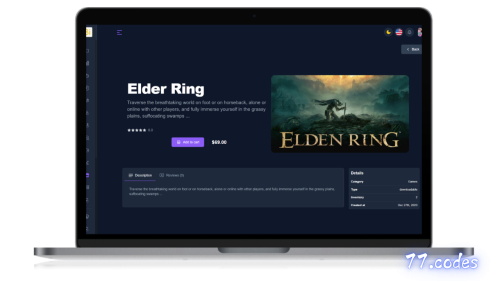
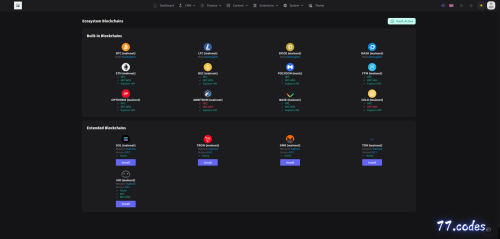
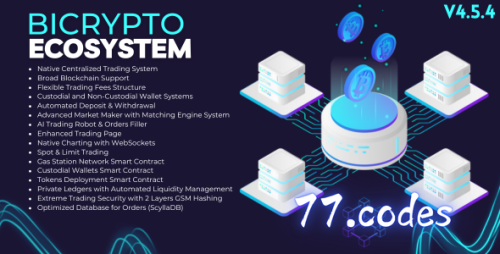
.thumb.png.fbfad28c764ccd71ae2424c00c6f9c06.png)
.thumb.png.54bd3d4ca9994b3041b1fa864e30a143.png)
.thumb.png.0a11158286d9f3644d5a719d429872a1.png)
.thumb.png.6bbf17ebc361ed5d1725a0657fedc3b0.png)


